Look around, look around at how lucky we are to be alive right now.
I’m not going to drop hot beats and flawless rap-rhymes like Lin-Manuel Miranda. But that line— after two years (and in some places more) of living in uncertainty as to whether or not live, in-person theatre would ever come back to us? After everything we all went through, collectively, individually, as a young nation struggling (not unlike the time and place where this whole thing called Hamilton is set, actually) those words are ringing so true for so many. And if you’re among the lucky— to be alive right now? And you’ve got your tickets to be in the room where it happens? (Which is the Opera House of The John F. Kennedy Center for Performing Arts, by the way.) Then you are not throwing away your shot! Hamilton has arrived once more at The Kennedy Center for a two-month limited engagement stop on its national tour route. The brainchild (Music, Book, and Lyrics) of Lin-Manuel Miranda, with Direction by Thomas Kail and Choreography by Andy Blankenbuehler, is here throwing down history in a time where those founding principals have never mattered more. It swept the nation once, it’s still sweeping the nation, and will probably continue to sweep the nation for years to come. Its sensationalism isn’t just hype this time around; these performers are heart and body and mind soul 110% there, giving everything they have to give to the experience. They are not throwing away their shot either.
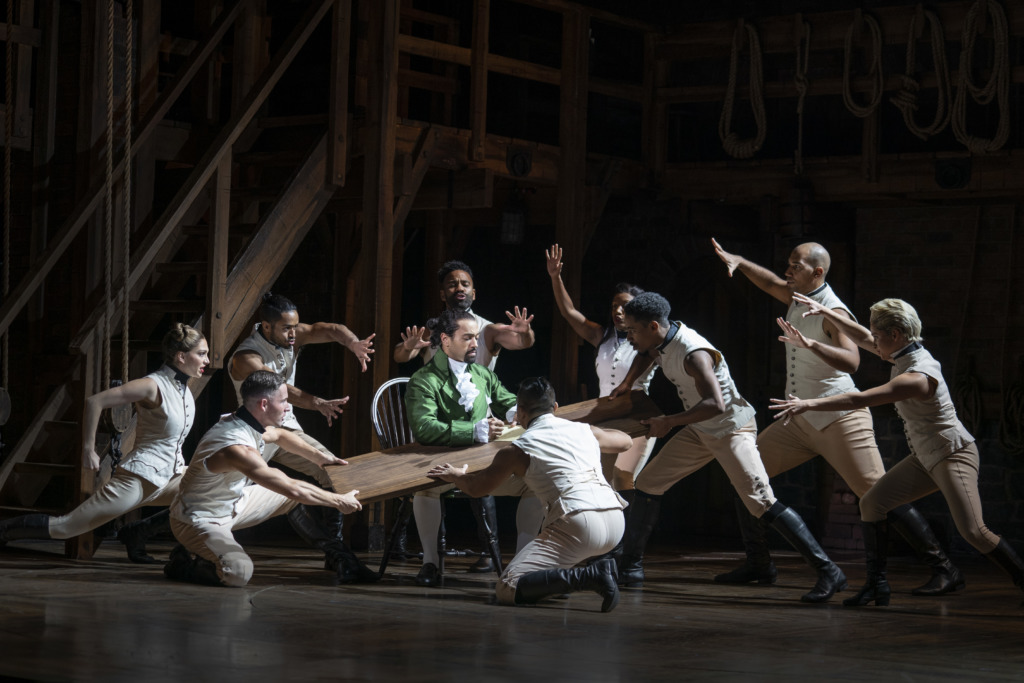
That back-to-basics aesthetic is crafted together by Scenic Designer David Korins and Costume Designer Paul Tazewell. The whole visual construct of Hamilton leans into this framework of tabula rasa, a fresh start; a new beginning. Most of the time, most of the ensemble (including titled players who double up in the ensemble) can be seen in “foundation garments.” Of course we get war coats— red and blue— some hats, some fancy dresses for the revolutionary period, but for the most part, Tazewell is keeping it simple and fresh which mirrors how this country and this immigrant known as Alexander Hamilton got their start. The ‘basics’ are also reflected in David Korins’ scenic design. (Nothing on that set is working as hard as that turntable, except the performers of course; that turn table creates theatrical magic and optical illusions the likes of which really augment the storytelling consistently throughout the performance, particularly when it comes to slow-motion effects.) It’s bare bones, almost skeletal and it’s perfect because it forces you to focus on the story, which is being rapped in real time right in your face.
Now, the simplicity ends there. And don’t be fooled, Tazewell and Korins didn’t just show up with a few ladders and britches and call it a day; it’s deceptive simplicity in their aesthetic but it serves the show well. Lighting Designer Howell Binkley follows the choreographic trajectory of the show— flash, sensationalism, razzle-dazzle, and every theatrical trick in the book. Much of Binkley’s explosive lighting design is timed with Sound Designer Nevin Steinberg’s work; there are a lot of aural BOOMs that punctuate canons that we see represented through Binkley’s illuminations. Binkley understands how to light a mood too; more subdued songs— like “The World Was Wide Enough”— where time just stops? Binkley’s got that in raw focus and glowing white.
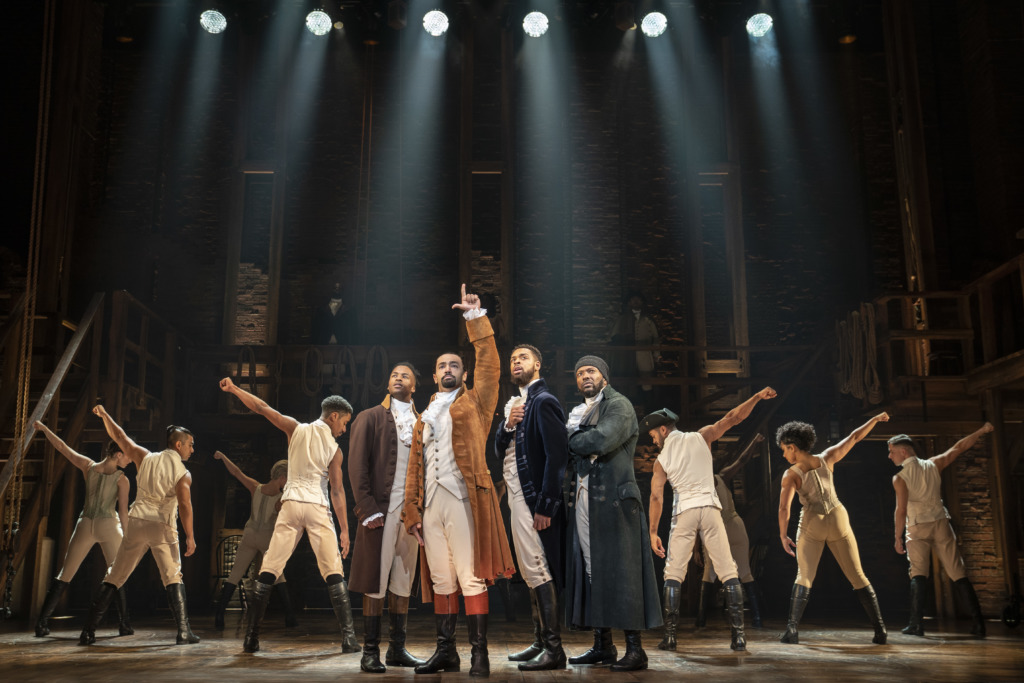
Choreographer Andy Blankenbuehler is not throwing away his shot; those moves are off the hook. There is gymnastic, acrobatic choreography, infused with urban influence, break dance moves, and all sorts of stylistic advances that just dazzle and mesmerize. If you can’t wrap your head around how methodic each of these dance routines are, lining perfectly with the flavor and feeling of each musical number (there are even some slow-motion cartwheels in there somewhere; the show moves at such a clip that it’s hard to tell one moment from the next, but they definitely happen and it’s stunning), you’ll enjoy the visual spectacle that Blankenbuehler crafts all throughout the performance. The dance core and ensemble (at this performance— Aaron J. Albano, Taylor Broadard, Demarius R. Copes, Pedro Garza, Cyndal Gilmore, Kristen Hoagland, Gabriel Hyman, Mallory Michaellann, Taeko McCarroll, Trevor Miles, Christopher Rice-Thomson, alongside other named performers who drift in and out of the ensemble) are slaying it; the execution of those moves is so precise, so in synch, it’s astonishing.
There are so many stellar and stunning performances in this touring production of Hamilton all of Alexander Hamilton’s words plus Lin-Manuel Miranda’s words put together could never really do them justice. They are all their own individuals; they all work together as one. You’ve never seen anything like it in a narrative that’s so bombastic, so full of high-octane, frenetic, indefatigable energy. There are all these little moments too. Like when a letter gets passed— filtering through the hands of everyone on stage— it’s just wondrous to behold. All these little details make the performance spectacular and absolutely worth all of the hype that’s led up tot his moment.
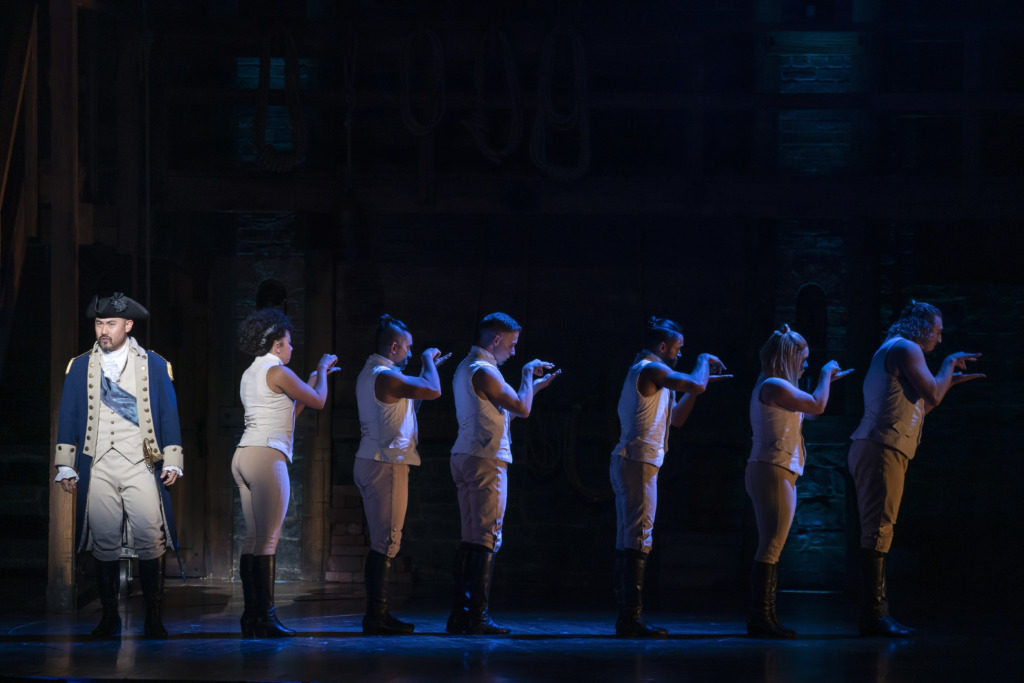
You’ve got The Schuyler Sisters— (at this performance) Eliza (Vanessa Magula), Angelica (Ta’Rea Campbell), and Peggy (Julia Estrada)— giving power to the female voice in this production. Julia Estrada’s Peggy, the essentially ‘forgotten’ Schuyler sister, is cute but virtually non-existent except for during “The Schuyler Sisters.” Estrada doubles up as Maria Reynolds for the second act and is featured during “Say No To This” and her voice is strong and impressive. Ta’Rae Campbell is serving up some serious attitude when it comes to knowing her own heart and mind. Power house vocals soar their way through the aforementioned song of three sisters, but when she takes her solo lead with “Satisfied” you get a whole inner narrative that most musicals might otherwise leave out. It’s astonishing how much heart Campbell has to give to the character, considering her Schuyler sister is essentially slotted the role of ‘second fiddle.’
Vanessa Magula delivers a winsome ingenue with her portrayal of Eliza. If you’ve seen the story and you know what’s coming, from the moment you lay eyes on her, your heart just breaks for her. And if you’ve never seen the story (or haven’t read your history books) she takes you step by step on that journey of hope, trust, belief, guiding you with her songbird voice through numbers like “Helpless”, which is her true moment to shine in the first act, and “That Would Be Enough” a romantic duet (that totally diverts from the political track of this show’s narrative) with the title character. Watching Magula delve deep into the turmoil that gets thrown at Eliza in the second act is truly heartbreaking. As Eliza suffers all sorts of loss, you feel every heartache she undertakes as Magula belts out her feelings during “Burn”, which is the complete opposite of a torch song.
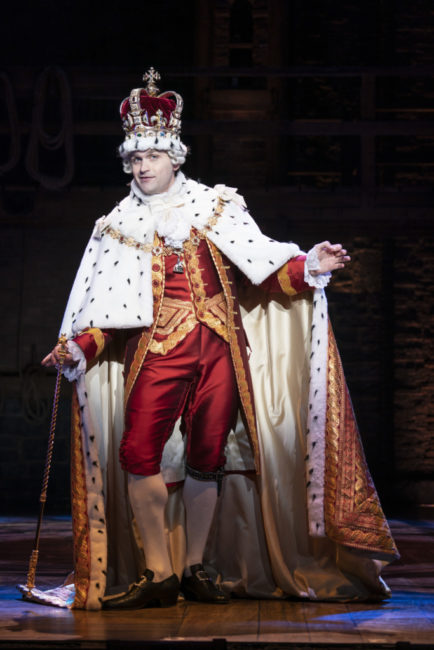
While there’s cheeky humor and good laugh lines and lots of entertainment peppered throughout the performance, the king— literally— of comic nonsense in this production is King George (Neil Haskell.) You get to see a little of the premature madness of King George in Haskell’s performance and it’s a screaming delight of hysterical laughter. Haskell is bringing an absurdly over-the-top affected nasal-voice to King George, which makes his songs— “You’ll Be Back”, “What Comes Next”, and “I Know Him”— a series of laugh-out-loud moments where the audiences just cannot control themselves. Rigid and stiff in his physicality, Haskell brings this petulant and obnoxious patriarchal character to the zenith of camp every time he marches onto the stage. He’s a proper scream.
(At this performance) You’ve got Hercules Mulligan and James Madison sharin’ looks— they’re being played by the same actor and that actor is Conroe Brooks. Don’t think this is exclusive for Brooks with Mulligan and Madison, there’s too many historical characters for each person to just be having one. Marcus John is wearing the face of two young men— he’s playing John Laurens and Philip Hamilton. There’s one more big double cast, we haven’t mentioned yet— Warren Egypt Franklin in the roles of Jefferson and Lafayette. Clearly this critic is no Lin-Manuel Miranda, but hey, I’m not throwin’ away my shot! Warren Egypt Franklin— first as the robustly-spirited French Lafayette and later as the cocky and comically slick Thomas Jefferson— is insanely talented. You really get a sense of his singing and dancing capabilities during “What’d I Miss?” the splashy jazz-style opener for the second act. The number itself is a showcase of Miranda’s musical versatility and it also serves as a flashy vehicle for Franklin to make the transition from Frenchman to Francophile. All of the aforementioned performers have an unimaginable capability to drop Lin-Manuel Miranda’s raps and rhymes with precision articulation and really get the message across while bringing some incredibly diverse talents to these roles in addition to all of that phenomenal rapping.
Marcus Choi is stunning a commander in chief George Washington. “One Last Time” a (slightly premature in the timeline) eleven-o’clock style number showcases Choi’s exceptionable vocal capabilities to both belt and sustain as well as gives the audience a glimpse into his impressive vocal range. The way he embodies George Washington, from the moment you meet him as the general on the field, through to his final moments in “Finale” you are on a journey of discovery with this secondary character. (He’s not G. Wash, so…) Choi has a remarkably commanding stage presence, a stunning voice, and impresses the audience with each scene he traverses.
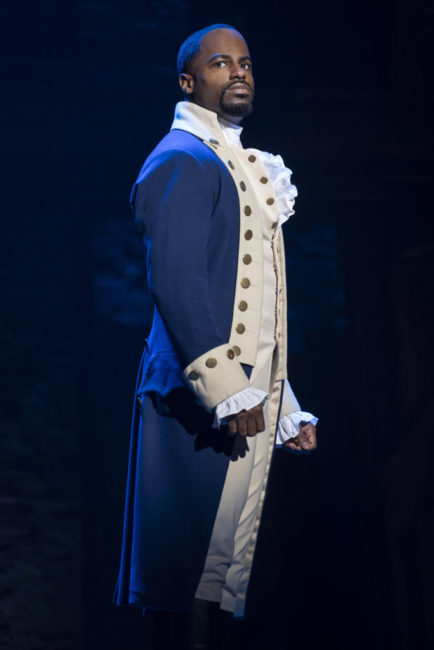
Aaron Burr, sir? That’s Jared Dixon for this performance. When Dixon shows up in the opening number— “Alexander Hamilton”— he tells you straight away the conclusion to the show. But never once in all of the interactions he has all throughout the performance do you ever feel like it’s a foregone conclusion. Dixon’s portrayal of A. Burr possesses the power to make you forget that that’s how this story ends. He may be edgy and obnoxious but there’s this raw humanity that comes pouring out of him in “Dear Theodosia” and you feel all of those unnamable furies that come seething and seeping out of his soul somewhere between the end of “The Election of 1800” and “Your Obedient Servant.” There’s also this stunning song and dance routine that really gives you a glimpse into the jealous of the Aaron Burr character as well as the versatility of Dixon as a performer; it’s “The Room Where It Happened.” Dixon is an exceptional antagonist for the title character in this performance.
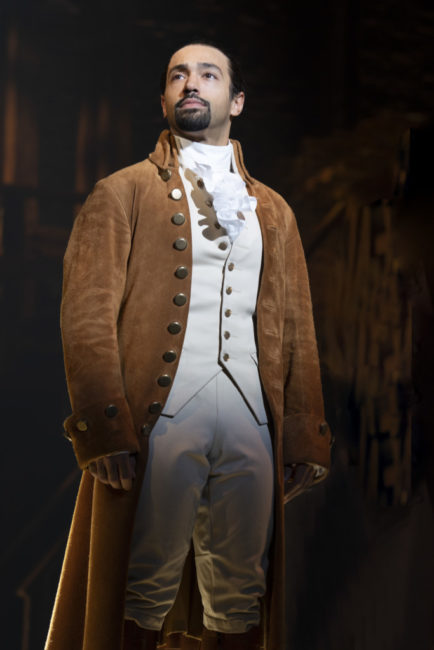
Getting to live, breathe, and be Alexander Hamilton is a true badge of honor in this multi-Tony-winning musical; Pierre Jean Gonzalez is wearing that badge of honor loud and proud; he’s simultaneously channeling Lin-Manuel Miranda and making the role his own. There is an earnest and raw humanity that is at the forefront of every moment he’s standing on the stage. Whether he’s rapping or singing or simply speaking the character’s truth, Gonzalez is animated, lively, as well as expressive and articulate, particularly when it comes to laying down some of the more cleverly verbose rap-rhymes that Miranda has penned into the lyrics. You say the many faces and dimensions of Alexander Hamilton through Gonzalez’ portrayal; the way he dotes with convivial affection on the son of whom he so excited by in his half of “Dear Theodosia” or the way his temper flares with resilience and determination in “My Shot” or the enlightening desperation that is juxtaposed sharply against those moments in “The World Was Wide Enough”— it’s an ell-encompassing miracle performance.
So do not throw away your shot— be in the room where it happens— look around, look around at how luck you are to have a chance to see Hamilton while it’s still here in DC. Washington, do not throw away your shot!
Running Time: Approximately 3 hours with one intermission
Hamilton plays through October 9, 2022 in the Opera House Theatre at The John F. Kennedy Center for the Performing Arts, 2700 F Street NW, Washington, DC. For tickets call the box office at (202) 467-4600 or purchase them online.
